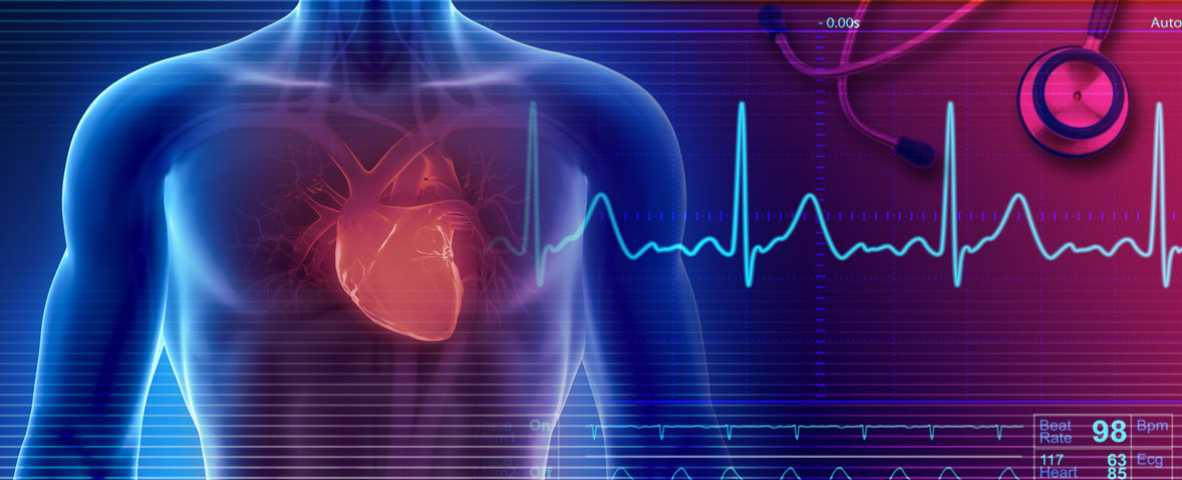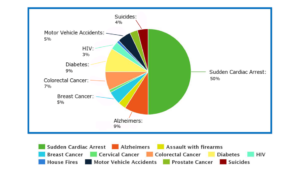


I thought I would debunk some myths about CPR and why it is vital to be trained!
Globally, there is over 135 Million Cardiovascular deaths each year and the prevalence of cardiovascular disease is increasing.1 Globally, the incidence of out-of-hospital cardiac arrest ranges from 20 to 140 per 100 000 people, and survival ranges from 2% to 11%.2 For easy sake let’s just say that it could definitely happen to you to witness a sudden cardiac arrest. In a 2006 study, 70% of bystanders of a cardiac arrest were family members3 and of that ONLY 33% started CPR – even though most had been trained! However, they found that those with recent CPR training were more likely to perform CPR.3 Most (out of hospital) Cardiac Arrests occur in the home.

Do you know the difference between a sudden cardiac arrest and heart attack? They are the same thing, right? Actually not, a myocardial infarction or ‘heart attack’ is narrowing or blockage of the arteries that supply blood to the heart. A sudden cardiac arrest is ANYTHING that stops the heart from beating well enough to provide oxygen to the brain and tissues. This can be a number of things: Electrocution, drowning, heart attack, car accident, anaphylaxis, Ventricular fibrillation, poisoning, etc. Consider of all the situations these issues could occur. When the heart stops pumping normally, this results in a person losing consciousness and their ability to breathe, or CLINICAL DEATH. Within about 2-3mins after there is no oxygen being supplied to the brain, heart or tissues, the cells in all these areas begin to die and Biologic death or ‘brain death’ occurs. The window of opportunity to save someone’s life occurs during these 2-3 mins!! Have you ever had to call Emergency services? How long does is take an ambulance to get to a location in a major city? >3mins- unless it happens to occur in front of a hospital.
Survival rate was 10.5% when CPR was performed before EMS arrival versus 4.0% when CPR was not performed before EMS arrival.4,5 This survival rate increases with high quality CPR and delivery of CPR of those recently trained!6
A large gap exists between current knowledge of CPR quality and its optimal implementation, which leads to preventable deaths attributable to cardiac arrest4 Which supports the idea that being trained is better than not being trained. Also, bystander CPR has been shown to be associated with an increased chance of survival7,9. The culture of fear has contributed to reduction of by standers performing CPR. The likelihood of someone suing you for trying to save their life is very small. If you are trained, can recognize the appropriate signs and symptoms, you can save a life. The question is more if you could be SUCCESSFULLY sued- the answer to that is no. Similar to the “Good Samaritan Law”8, in Spain, the ‘Buen Padre’ is a legal doctrine that protects against malicious intent. You are required to ask permission before performing CPR, if they cannot reply, then consent is implied.
I don’t want to get a disease! Although a poor reason to not help someone who is dying – it does happen. Contraction of HIV and hepatitis B remains a great concern during provision of CPR, however no case of HIV, hepatitis B or C, or Creutzfeld-Jakob disease has ever resulted from this cause (Vaillancourt, Steill & Wells, 2008).8 AND there is an alternative method of approved CPR that does not include mouth to mouth recitation.
In some cases, this is true. In Washington county however, the Fire and Rescue provides “sidewalk” CPR sessions at local libraries and shopping centers where laypersons may stop by at their convenience to learn CPR skills. In addition, they hold an annual mass-gathering “pump-a-thon” and similar mass gathering events whereby a large number of laypersons are trained at once.9
Although we are not yet holding mass CPR sessions or mandating it in schools yet (yes most other European countries teach kids in school 10). Check out the Kids Save Lives Article. In Spain, most companies with employees pay into the social security system, it is possible to receive a refund for Certifying and training employees under Semicyuc (the only valid CPR certification in Spain). Depending on your business it could account for a tax write off.
This is why parent group courses and Certifications are being offered by Vitality Health Solutions at a very reasonable price, so you can be prepared for the worst case scenario inside your home.
I hope this helped to remove some of the barriers to completing a CPR/First Aid course. I will be offering a parent First Aid/CPR course in January, please email me if you are interested in attending!
Thanks for reading!
Kaley
[1] Ahern, R. M., Lozano, R., Naghavi, M., Foreman, K., Gakidou, E., & Murray, C. J. (2011). Improving the public health utility of global cardiovascular mortality data: the rise of ischemic heart disease. Population health metrics, 9(1), 8.[Link]
[2] Berdowski, J., Berg, R. A., Tijssen, J. G., & Koster, R. W. (2010). Global incidences of out-of-hospital cardiac arrest and survival rates: systematic review of 67 prospective studies. Resuscitation, 81(11), 1479-1487. [Link]
[3] Swor, R., Khan, I., Domeier, R., Honeycutt, L., Chu, K., & Compton, S. (2006). CPR training and CPR performance: do CPR‐trained bystanders perform CPR?. Academic Emergency Medicine, 13(6), 596-601. [Link]
[4] Meaney, P. A., Bobrow, B. J., Mancini, M. E., Christenson, J., De Caen, A. R., Bhanji, F., … & Aufderheide, T. P. (2013). Cardiopulmonary resuscitation quality: improving cardiac resuscitation outcomes both inside and outside the hospital: a consensus statement from the American Heart Association. Circulation, 128(4), 417-435. [Link]
[5] Hasselqvist-Ax-Ax, I., Riva, G., Herlitz, J., Rosenqvist, M., Hollenberg, J., Nordberg, P., . . . Svensson, L. 2015. Early cardiopulmonary resuscitation inout-of-hospital cardiac arrest. The New England Journal of Medicine, 372(24), 2307-2315. [Link]
[6] Stiell, I. G., Brown, S. P., Nichol, G., Cheskes, S., Vaillancourt, C., Callaway, C. W., … & Free, C. (2014). What is the optimal chest compression depth during out-of-hospital cardiac arrest resuscitation of adult patients?. Circulation, 130(22), 1962-1970. [Link]
[7] Herlitz, J., Svensson, L., Holmberg, S., Ängquist, K. A., & Young, M. (2005). Efficacy of bystander CPR: intervention by lay people and by health care professionals. Resuscitation, 66(3), 291-295. [Link]
[8] Carragher, R., Johnson, J., & Harder, M. (2017). Factors that influence bystander CPR: A narrative review. [Link]
[9] Bouland, A. J., Halliday, M. H., Comer, A. C., Levy, M. J., Seaman, K. G., & Lawner, B. J. (2017). Evaluating barriers to bystander CPR among laypersons before and after compression-only CPR training. Prehospital emergency care, 21(5), 662-669. [Link]
[10] Böttiger, B. W., Bossaert, L. L., Castrén, M., Cimpoesu, D., Georgiou, M., Greif, R., … & Melieste, R. (2016). Kids Save Lives–ERC position statement on school children education in CPR.:“Hands that help–Training children is training for life”. Resuscitation, 105, A1-A3. [Link]